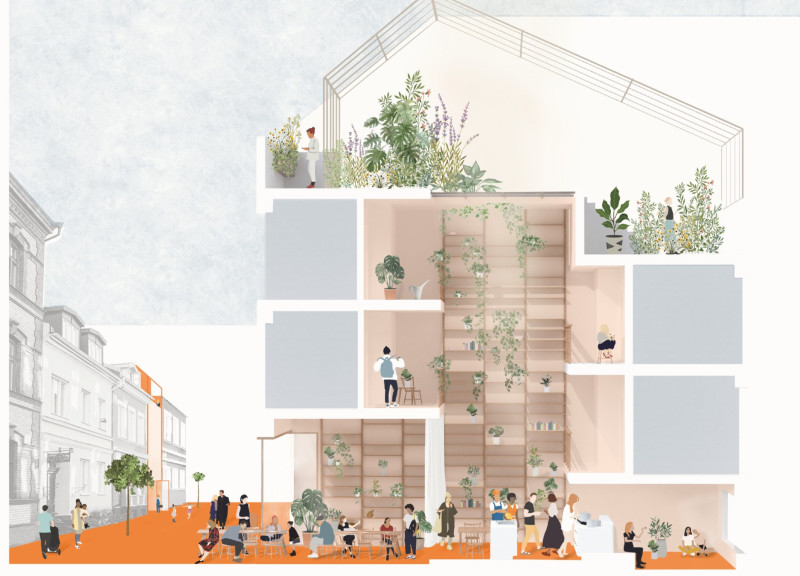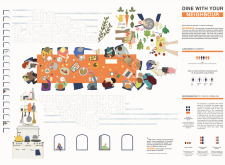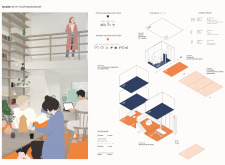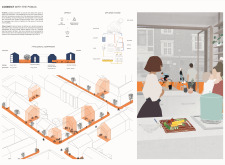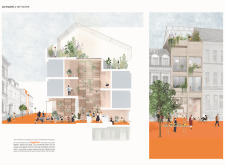5 key facts about this project
The functional layout consists of compact private units complemented by larger communal spaces, primarily focused on dining and social interaction. This arrangement enables residents to maintain personal privacy while fostering opportunities for social connection. The layout encourages a sense of belonging by including features such as a long communal dining table, which serves as both a social hub and a culinary space for residents to engage with one another.
Innovative Use of Space
A distinct feature of this project is its innovative approach to spatial configuration. The design prioritizes flexibility and interaction by connecting private areas to communal spaces through visual corridors and open layouts. Residents are afforded the opportunity to observe communal activities directly from their private units, promoting a continuous interaction between personal and shared environments. This transparency enhances the overall living experience by encouraging spontaneous interactions and a greater sense of community.
Sustainable Architectural Solutions
The project incorporates sustainable design principles to enhance its ecological footprint. Key materials include wood for structural elements, concrete for durability, glass to maximize natural light, and recyclable metals for kitchen fixtures. Off-grid systems, rainwater harvesting capabilities, and a focus on organic waste management illustrate the project's commitment to environmental sustainability. The use of vertical gardens further integrates nature into the urban landscape, contributing to residents' well-being while enhancing aesthetic appeal.
In summary, "Dine With Your Neighbour" offers a practical response to urban living challenges by emphasizing community orientation and sustainability. The architectural design facilitates social interaction while maintaining individual privacy, making it a relevant model for future urban developments. For more detailed insights into the architectural plans, sections, and overall design ideas of the project, readers are encouraged to explore the complete project presentation.


